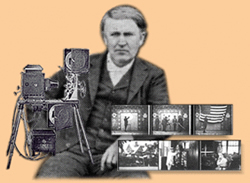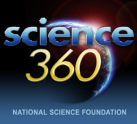The Science of Innovation
 What do self-driving cars, 3-D printers, and electronic tattoos have in common?
What do self-driving cars, 3-D printers, and electronic tattoos have in common?
They are all part of the “Science of Innovation,” the latest installment of the award-winning NBC Learn-National Science Foundation video series aimed at teaching kids science. Done in collaboration with the U.S. Patent and Trademark Office, the 11 videos highlight the process of invention by featuring scientists and engineers working on innovative projects across such industries as health care, energy, transportation, and agriculture.
The new series celebrates the 165th birthday of one of America’s greatest innovators, Thomas Edison, whose inventions include electric light bulbs, phonographs, and motion pictures. The featured NSF-funded scientists and engineers have all received U.S. patents for one or more aspects of their work.
In addition to the videos, related lesson plans developed by the National Science Teachers Association help middle and high school teachers highlight the science, technology, engineering, and math concepts that enable innovation. The lesson accompanying electronic tattoos, for instance, notes that inventors needed to know that electrical resistance is related to a material’s physical and chemical properties. They also had to use math to compare conductivity, while following the engineering design process led to improvements in their prototypes. The lesson then helps teachers incorporate the videos to facilitate inquiry and discussion in their classrooms.
“The next generation of innovators is sitting in our classrooms right now,” Soraya Gage, general manager of NBC Learn, said in a statement.
Each video segment can be downloaded and viewed for free at the NSF and NBCLearn websites.
 The segments feature such breakthrough technologies as:
The segments feature such breakthrough technologies as:
Smart Concrete–by adding carbon fiber to concrete mixture, a slab of concrete is able to conduct electricity. “Smart concrete” has many potential applications, including helping structural engineers identify trouble spots in a concrete structure long before stress or cracking is visible to the human eye.
Electronic Tattoo–a micro-electronic health monitor so thin, light and portable that it can attach right to the surface of skin and go wherever a person goes. This innovation has the potential to revolutionize the field of health care technology.
3-D Printers–a three-dimensional, digital representation of an object created with a computer and then sent to an inkjet printer that builds the prototype in three-dimensions. This innovative tool is giving scientists, engineers and backyard inventors a faster, easier and less expensive way to turn their ideas into a reality.
Bionic Limbs–a robotic exoskeleton that can help people with paralysis and other physical disabilities walk again.
Biometrics–-a method for capturing and analyzing the vein patterns in the white part of the eye to help identify people. Biometrics has potential applications for driver’s licenses, passports or computer identification control.
Biofuels–a new approach to producing biofuels that uses a marine bacterium called Saccharophagus degradans that otherwise is mostly known for its damaging impact on the environment.
Synthetic Diamonds–a new method for creating “synthetic diamonds” that not only creates larger diamonds, but also manipulates their toughness, hardness and color. Potential uses include cutting tools, electronics or optical materials.
Self-driving Cars–a fleet of safer, self-driving cars that use artificial intelligence to control the car.
Fuel Cell Efficiency–to operate and function efficiently, machines of all shapes and sizes need a source of energy. A series of innovations is helping to make energy conversion within fuel cells as efficient as possible.
Anti-counterfeiting Devices–biosensors designed for food and water safety are now allowing manufacturers to embed unique biomarkers into their products, helping authorities instantly detect whether they are real or fake.
Filed under: Special Features, Web Resources
Tags: 3-D printing, Edison, Ideas & Inventions, Internet Resources, National Science Foundation, NBCLearn, patents, Science of Innovation, self-parking cars, smart concrete, STEM videos, synthetic diamonds, Web Resources








